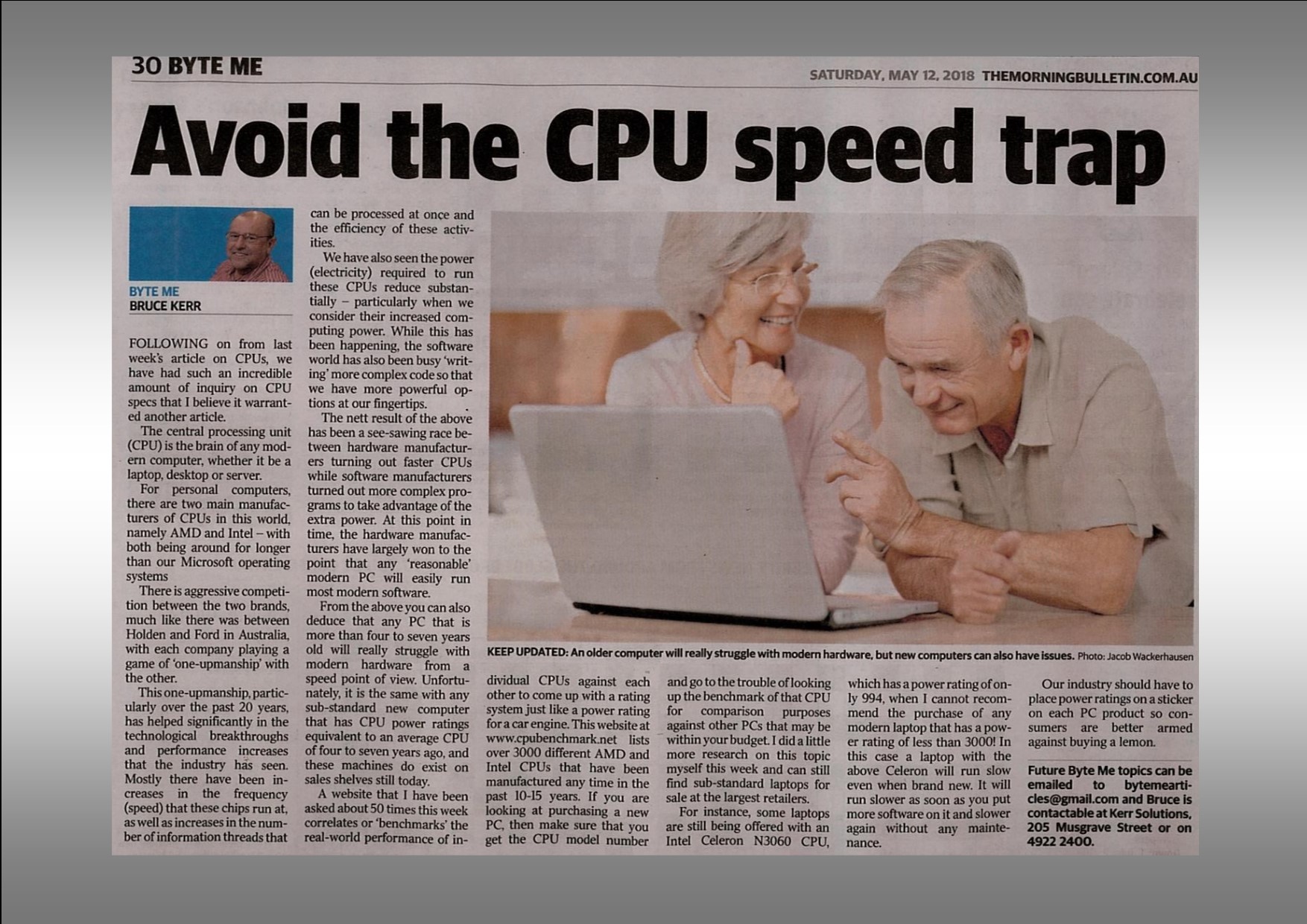12th May 2018
Avoid the CPU Speed Trap
Following on from last weeks’ article on CPU’s matter we have had such an incredible amount of inquiry on CPU specs, that I believe it warranted another article. The Central Procession Unit (CPU) is the brain of any modern computer, whether it be a laptop, desktop or server.
For Personal Computers there are 2 main manufacturers of CPU’s in this world, namely AMD and Intel – with both being around for longer than our Microsoft Operating Systems. There is aggressive competition between the two brands much like there was between Holden & Ford in Australia with each company playing a game of ‘one-upmanship’ with the other.
This one-upmanship, particularly over the last 20 years has helped significantly in the technological breakthroughs and performance increases that the industry has seen. Mostly there have been increases in the frequency (speed) that these chips run at as well as increases in the number of information threads that can be processed at once and the efficiency of these activities.

We have also seen the power (electricity) required to run these CPU’s reduce substantially – particularly when we consider their increased computing power. While this has been happening the software world has also been busy ‘writing’ more complex code so that we have more powerful options at our fingertips.
The nett result of the above has been a seesawing race between hardware manufacturers turning out faster CPU’s while software manufacturers turned out more complex programs to take advantage of the extra power. At this point in time the hardware manufacturers have largely won to the point the any ‘reasonable’ modern PC will easily run most modern software.
From the above you can also deduce that any PC that is more than 4-7 years old will really struggle with modern hardware for a speed point of view. Unfortunately, it is the same with any sub-standard new computer that has CPU power ratings equivalent to an average CPU of 4-7 years ago, and these machines do exist on sales shelves still today.
A website that I have been asked about 50 times this week correlates or ‘benchmarks’ the real-world performance of individual CPU’s against each other to come up with a rating system just like a power rating for a car engine. This website at www.cpubenchmark.net lists over 3000 different AMD and Intel CPU’s that have been manufactured anytime in the last 10-15 years.
If you are looking at purchasing a new PC then make sure that you get the CPU model number and go to the trouble of looking up the benchmark of that CPU for comparison purposes against other PC’s that may be within your budget. I did a little more research on this topic myself this week and can still find sub-standard laptops for sale at the largest retailers.
For instance, some laptops are still being offered with an Intel Celeron N3060 CPU which has a power rating of only 994 when I cannot recommend the purchase of any modern laptop that has a power rating of less than 3000! In this case a laptop with the above Celeron will run slow even when brand new. It will run slower as soon as you put more software on it and slower again without any maintenance.
Our industry should be compelled to place these power ratings on a sticker on each PC product so that consumers can be better armed against the purchase of a lemon.
Future Byte Me topics can be emailed to [email protected] and Bruce is contactable at Kerr Solutions, 205 Musgrave Street or on 49 222 400.
For more advice and assistance from Kerr Solutions, like and follow us on Facebook
